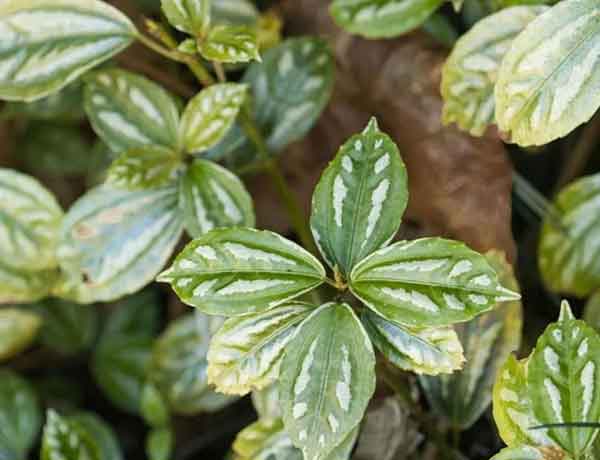Aluminum Plant (Pilea cadierei) Profile
Written by Iris
Nov 10 2021
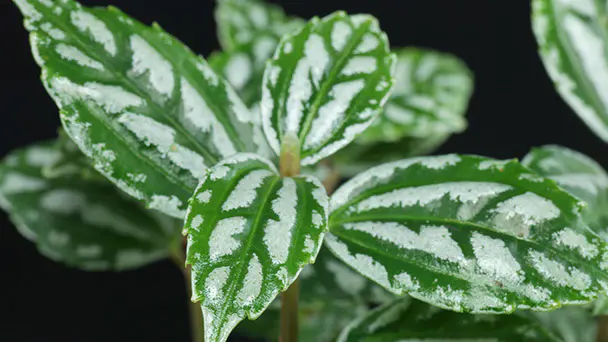
Aluminum plant (Pilea cadierei) is a wonderful glass container species due to its low growth habit, amazing leaves and ease of care. Often referred to as aluminum plant because of the beautiful silver mottling it spatters on leaves, and Aluminum plant (Pilea cadierei) will illuminate any glass container project. Native to China and Vietnam, Aluminum plant (Pilea cadierei) are actually part of the nettle family, but are more like shrubs.
Aside from Aluminum Plant's metallic patters, the overall leaves are a medium green color. The silver design is unique to each leaf and creates an assortment of different shapes on each plant. Aluminum Plant is not really known for their flowers. In fact, Aluminum Plant only bloom on rare occasions. When the vine does produce flowers, they are very small, off white, and rather plain-looking. Given the right care, Aluminum Plant is capable of growing up to 12 inches long and forms a lush mat.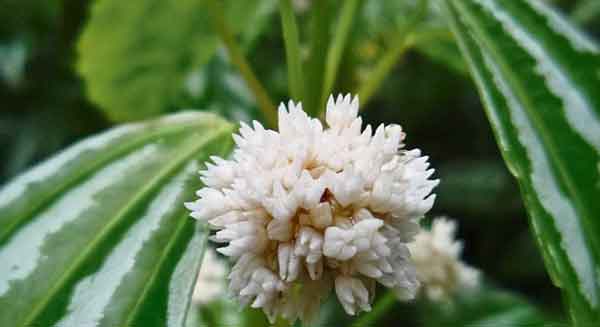
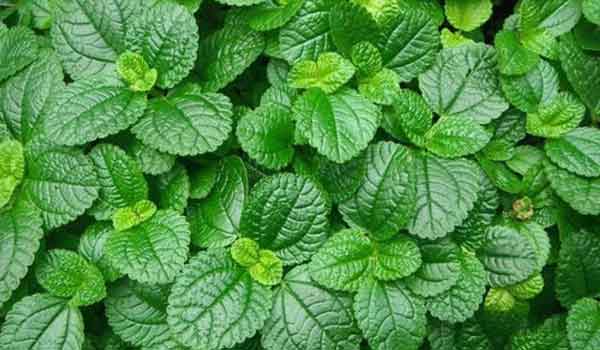
When looking for a part of the Aluminum Plant to divide it will become very obvious that there are various different offshoots that make up your Aluminium Plant. Carefully shake the root system to loosen the soil so you can see the root system clearly. A good method to do this is to run your fingers through to separate the Aluminum Plant roots. This usually doesn't cause too much damage if you do it gently but don't worry if a few roots break as it won't harm your Aluminum Plant.
You may have to trim off the odd root to detangle the plant but with a little gentle tugging, you should be able to pull the sections apart to form individual plants. All you have to decide now is how many sections you want, we usually divide by either 2 or 3 but it all depends on the size of your Aluminium Plant.
You need to make sure that each section ends up with a good amount of roots to ensure your propagation is successful.
Pop your mother plant back into its original pot (or downsize slightly if you have taken away a substantial amount of the original plant). Then pot your new Aluminium Plant into fresh potting mix. Never reuse old potting mix from other plants as this can transfer pets or bacteria without you even realising.
If the roots aren't very mature on one or more of your sections you may want to grow them in water for a few weeks.
Your Aluminium Plant propagation is complete!! Now your plants are safely in their new homes you want to resume normal Aluminium Plant care. For a few weeks, you might notice the Aluminum Plant need a little extra water as they are used to growing in water but they should adjust after 2-3 weeks.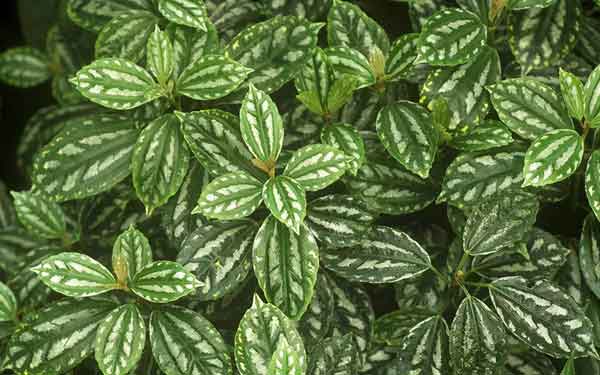
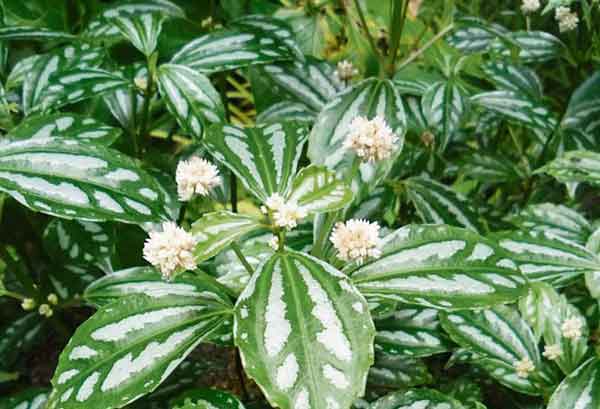
The love of Aluminum Plant for humidity makes this plant suitable for terrariums.
By using this plant as ground cover it will resemble its natural habitat.
Due to the short nature of this plant, Aluminum Plant looks best when paired with taller plants. The taller plants can also provide some shade for the aluminum plant. Plant Aluminum Plant in hanging baskets or grow them as a ground cover. Whether it is placed alone or with other plants, keep the aluminum plants away from direct sunlight and hot windows.
Aluminum Plant (Pilea cadierei) PictureAluminum Plant (Pilea cadierei) InfoEcological Habits of Aluminum Plant (Pilea cadierei)Aluminum Plant (Pilea cadierei) Distribution AreaHow to Grow and Care for Aluminum Plant (Pilea cadierei)How to Grow Aluminum Plant (Pilea cadierei)How to Care for Aluminum Plant (Pilea cadierei)Aluminum Plant (Pilea cadierei) Common Pests/DiseasesAluminum Plant (Pilea cadierei) Design Tips
Aluminum Plant (Pilea cadierei) Picture
Aluminum Plant (Pilea cadierei) Info
| Botanical Name | Pilea cadierei |
| Common Name | Aluminum Plant, Watermelon Pilea |
| Plant Type | Herbaceous perennial |
| Mature Size | 1 - 2 ft |
| Sun Exposure | At least four hours of indirect, sun a day |
| Soil Type | Sandy soil mixture |
| Soil pH | Slight acidic to neutral |
| Bloom Time | Rarely blooms |
Ecological Habits of Aluminum Plant (Pilea cadierei)
Aluminum Plant is mostly desired for its attractive leaves. Each individual leaf grows from the ground and branches out in an umbrella-like style. aluminum plant are oval in shape, thin, and arranged in opposite pairs. In addition, Aluminum Plant edges are slightly jagged and the top surface has four rows of raised metallic silver patches.Aside from Aluminum Plant's metallic patters, the overall leaves are a medium green color. The silver design is unique to each leaf and creates an assortment of different shapes on each plant. Aluminum Plant is not really known for their flowers. In fact, Aluminum Plant only bloom on rare occasions. When the vine does produce flowers, they are very small, off white, and rather plain-looking. Given the right care, Aluminum Plant is capable of growing up to 12 inches long and forms a lush mat.

Aluminum Plant (Pilea cadierei) Distribution Area
Pilea cadierei, or Aluminum Plant, is commonly found in the Yunnan and Guizhou regions of central-south China, not too far from the wider-known Pilea peperomioides. The species was first described by François Gagnepain & André Guillaumin in 1939, placing it in the genus of Pilea and using the specific epithet of 'cadierei' that honours 20th-century French botanist, Léopold Michel Cadière. The name, Pilea, derives from the Latin word pileus, meaning 'felt cap' due to the calyx covering the achene.
How to Grow and Care for Aluminum Plant (Pilea cadierei)
How to Grow Aluminum Plant (Pilea cadierei)
- With Cuttings
- With Division
When looking for a part of the Aluminum Plant to divide it will become very obvious that there are various different offshoots that make up your Aluminium Plant. Carefully shake the root system to loosen the soil so you can see the root system clearly. A good method to do this is to run your fingers through to separate the Aluminum Plant roots. This usually doesn't cause too much damage if you do it gently but don't worry if a few roots break as it won't harm your Aluminum Plant.
You may have to trim off the odd root to detangle the plant but with a little gentle tugging, you should be able to pull the sections apart to form individual plants. All you have to decide now is how many sections you want, we usually divide by either 2 or 3 but it all depends on the size of your Aluminium Plant.
You need to make sure that each section ends up with a good amount of roots to ensure your propagation is successful.
Pop your mother plant back into its original pot (or downsize slightly if you have taken away a substantial amount of the original plant). Then pot your new Aluminium Plant into fresh potting mix. Never reuse old potting mix from other plants as this can transfer pets or bacteria without you even realising.
If the roots aren't very mature on one or more of your sections you may want to grow them in water for a few weeks.
Your Aluminium Plant propagation is complete!! Now your plants are safely in their new homes you want to resume normal Aluminium Plant care. For a few weeks, you might notice the Aluminum Plant need a little extra water as they are used to growing in water but they should adjust after 2-3 weeks.

How to Care for Aluminum Plant (Pilea cadierei)
- Light
- Soil
- Water
- Temperature and Humidity
- Fertilizer
- Pruning

Aluminum Plant (Pilea cadierei) Common Pests/Diseases
The aluminum plant is not an invasive species or toxic. However, Aluminum Plant does have a few potential threats. Spider mites love this plant. Whiteflies may also pose a problem. Try to wash the mites or flies away with lukewarm water. If the water doesn't get rid of the infestation, use insecticide like neem oil. Besides the pests, look out for gray mold. It's the biggest problem that the aluminum plant may face. With gray mold, the leaves start to develop grayish-brown patches. The leaves will then slowly rot and wither. This is typically caused by overwatering. To get rid of the rot, cut away the infected areas. If the rot has spread, a fungicide may treat the problem.Aluminum Plant (Pilea cadierei) Design Tips
Window sill and potted plant are the simplest ways of displaying Aluminum Plant. Aluminum Plant contrast well with the foliage of other plants with which they may be quite effectively grouped together. Also, Aluminum Plant can be used for hanging baskets or cascading down a wall. aluminum plants are grown mainly for their highly textured and metallic foliage. A collection of several different varieties would make an attractive display on a window with bright but indirect light. (Find more best indoor hanging plants here.)The love of Aluminum Plant for humidity makes this plant suitable for terrariums.
By using this plant as ground cover it will resemble its natural habitat.
Due to the short nature of this plant, Aluminum Plant looks best when paired with taller plants. The taller plants can also provide some shade for the aluminum plant. Plant Aluminum Plant in hanging baskets or grow them as a ground cover. Whether it is placed alone or with other plants, keep the aluminum plants away from direct sunlight and hot windows.
Latest Updated
- Benefits of Bugleweed - 7 Science-backed Health Benefits
- Bugleweed Dangers & Side Effects - Is It Poisonous?
- How to Plant Evergreen Trees - What You Should Know
- When to Plant Evergreens - Grow Guide for Evergreen Trees
- 12 Wonderful Evergreen Shrubs for Your Garden
- 12 Popular Evergreen Plants with Pictures for Beginners
- When And How To Prune A Lilac Bush Like a Pro
- How to Grow & Care for Lilac Vine (Hardenbergia Violacea)
- Japanese Lilac Tree (Syringa Reticulata) Care & Propagation Guide
- Shumard Oak Pros and Cons - What to Know
Popular Articles
- Winter maintenance of Antirrhinum Majus
- How to Grow Terminalia Mantaly Tree
- How to Grow and Care for Crossostephium Chinense
- How to grow Antirrhinum Majus in spring
- Peristeria Elata (Dove Orchid) Profile: Info & Care Guide
- Underwatered Snake Plant (Sansevieria Trifasciata) - Signs And How To Fix
- How to Care for Brazilian Jasmine Plant (Mandevilla Sanderi)
- How to Grow & Care for Graptopetalum Purple Delight in Summer
- Rosa Chinensis (China Rose): Plant Growing & Care Tips
- How to Care for Baby Sun Rose (Aptenia Cordifolia)
